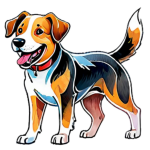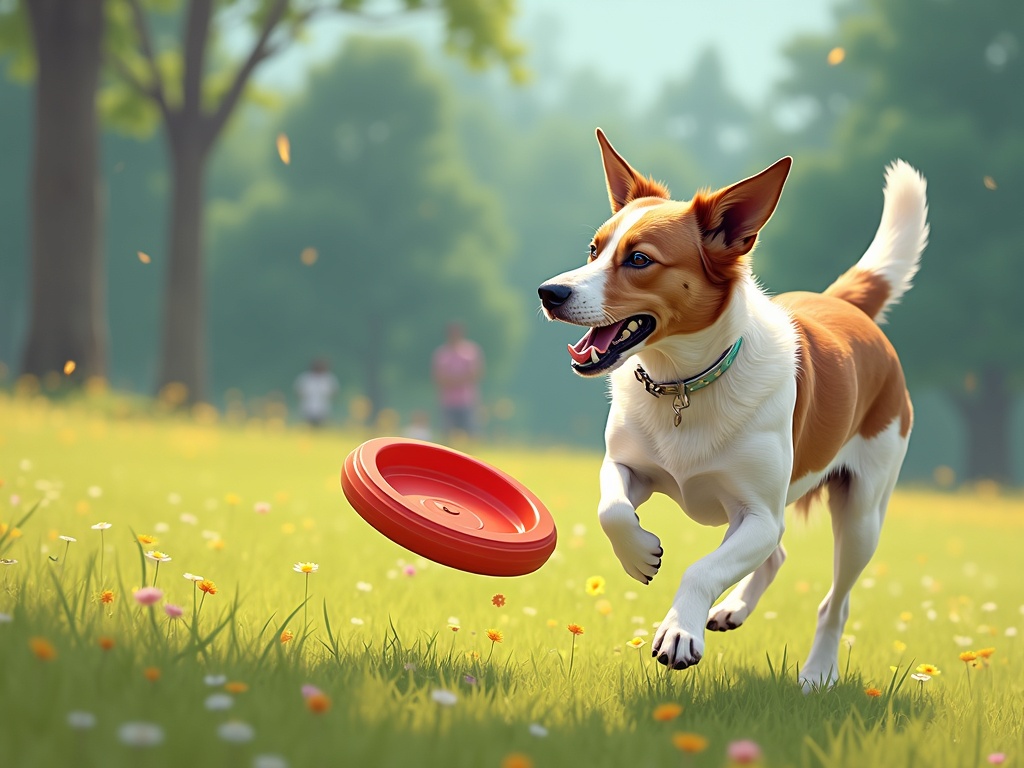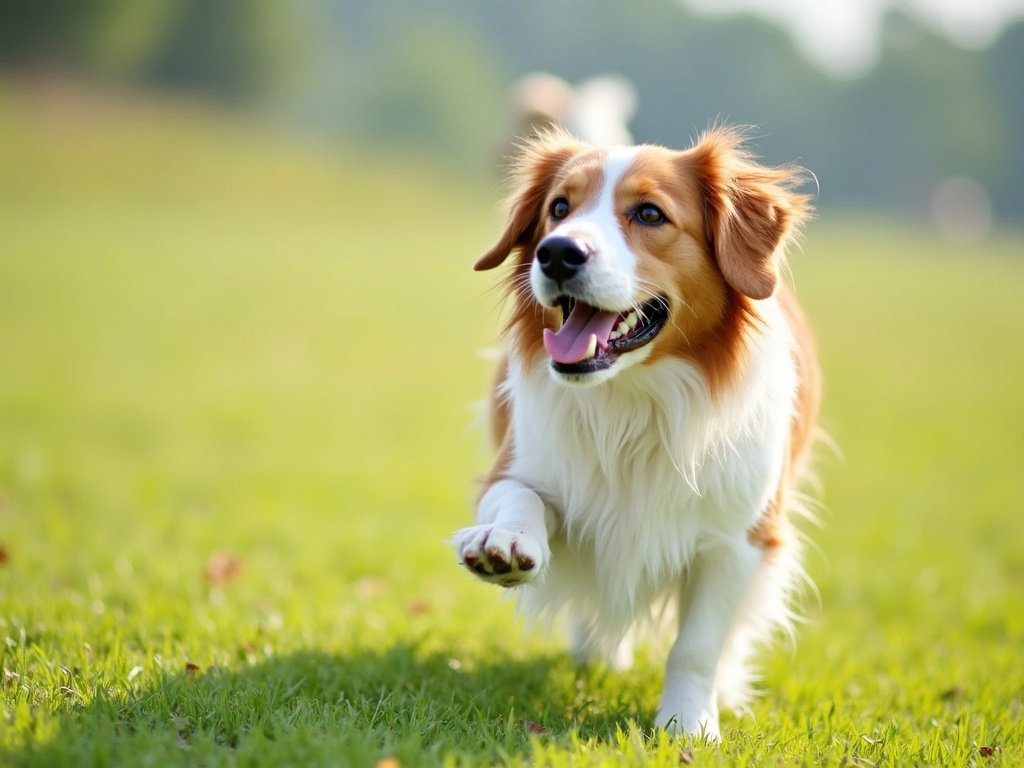Frisbee Training for Dogs: Unleash Your Dog's Inner Athlete
Imagine the scene: sun shining, a gentle breeze, and your dog, a blur of fur and focused energy, leaping high to snatch a frisbee mid-air. The crowd cheers (okay, maybe it’s just you cheering). This isn't just a dream; it's the reality of frisbee training for dogs, a dynamic sport that strengthens the bond between you and your canine companion while providing incredible physical and mental stimulation.
But where do you begin? Can any dog learn to love the disc? And how do you ensure their safety while they’re soaring through the air? This comprehensive guide will break down the essential steps to transform your furry friend into a frisbee-catching superstar.
Is Frisbee Training Right for Your Dog?
Before diving into the world of high-flying discs, it's crucial to assess whether frisbee training is a suitable activity for your dog. While it's a fantastic outlet for energy and promotes a strong connection, certain factors should be considered.
Breed and Energy Levels:
High-energy breeds like Border Collies, Australian Shepherds, and Labrador Retrievers often excel in frisbee due to their natural athleticism and drive. However, any dog with a moderate to high energy level can potentially enjoy the sport. Lazy dogs may prefer to stay on the sofa.
Age and Physical Condition:
Puppies under one year old should avoid intense frisbee training as their joints are still developing. Overly strenuous activity can lead to long-term joint problems. Similarly, older dogs or those with pre-existing conditions like arthritis or hip dysplasia may not be suitable candidates. Consult your veterinarian for guidance on your dog's physical readiness.
Temperament and Trainability:
A dog with a strong prey drive and a willingness to learn is more likely to take to frisbee training. Basic obedience skills like sit, stay, and come are essential foundations. If your dog struggles with these commands, work on them before introducing the disc.
Essential Gear for Frisbee Fun
Having the right equipment is crucial for ensuring a safe and enjoyable frisbee experience for your dog.
- Dog-Friendly Frisbees: Forget the hard plastic discs designed for humans. These can damage your dog's teeth and gums. Opt for soft, flexible frisbees made specifically for dogs. Look for materials that are durable yet gentle on their mouths. Popular options include those made from fabric, rubber, or a combination of materials.
- Treats: High-value treats are essential for positive reinforcement during training. Choose small, easily digestible treats that your dog loves.
- Water Bowl and Water: Frisbee is a physically demanding activity, especially in warm weather. Keep your dog hydrated by providing access to fresh water.
- Leash: A leash is necessary for controlled training sessions, especially in open areas.
Step-by-Step Guide to Frisbee Training
Now that you've assessed your dog's suitability and gathered the necessary equipment, it's time to begin training. Here's a step-by-step guide to get you started:
Step 1: Introducing the Frisbee
Start by simply letting your dog sniff and investigate the frisbee. Make it a positive experience by associating the disc with treats and praise. Hold the frisbee out and reward your dog for approaching it. You can also gently rub the frisbee on your dog to get them used to the texture. The goal is to create a positive association with the frisbee, from the sounds, colours and smells!
Step 2: Building a Positive Association
Use the frisbee to play gentle tug-of-war. Hold onto the frisbee and let your dog tug briefly, then reward them with praise and a treat when they release it. This helps build their interest in the disc and teaches them to release it on command. Keep tug sessions short and playful to avoid overexertion.
Step 3: The Roll Catch
Once your dog is comfortable with the frisbee, start rolling it along the ground. Encourage your dog to chase and catch the rolling disc. Reward them with praise and a treat each time they successfully catch it. This teaches them to track the frisbee and develop their catching skills. As they improve, gradually increase the distance you roll the frisbee.
Step 4: Short Throws
Now it's time to introduce short throws. Start with underhand throws, keeping the frisbee low to the ground. Encourage your dog to catch the frisbee in the air. If they miss, don't discourage them. Simply pick up the frisbee and try again. Reward them generously when they successfully catch the frisbee. Gradually increase the distance and height of your throws as your dog becomes more confident. Make sure they're not jumping too high at this stage.
Step 5: Increasing Distance and Height
Once your dog is consistently catching short throws, you can start increasing the distance and height of your throws. Use a variety of throwing techniques, such as backhand throws and forehand throws, to keep things interesting. Be mindful of your dog's physical limitations and avoid throwing the frisbee too high or too far, especially in the beginning. If your dog is showing signs of fatigue, take a break.
Step 6: Introducing Tricks (Optional)
For advanced frisbee training, you can introduce tricks like catching the frisbee between your legs, jumping over your back to catch the frisbee, or performing flips in the air. These tricks require a high level of skill and coordination, so be patient and break them down into smaller, manageable steps. Use positive reinforcement to encourage your dog and celebrate their successes.
Safety First: Preventing Injuries
While frisbee is a fun and rewarding activity, it's crucial to prioritize your dog's safety to prevent injuries.
- Warm-Up: Before each frisbee session, warm up your dog's muscles with light exercises like walking or trotting.
- Proper Throwing Technique: Avoid throwing the frisbee too hard or too high, especially for beginners. Focus on accuracy and gentle throws.
- Soft Landing Surfaces: Choose training locations with soft landing surfaces like grass or sand to minimize impact on your dog's joints.
- Avoid Overexertion: Watch for signs of fatigue, such as excessive panting, slowing down, or limping. Take frequent breaks and shorten training sessions during hot weather.
- Cool-Down: After each frisbee session, cool down your dog's muscles with gentle walking and stretching.
Advanced Frisbee Techniques and Games
Once your dog has mastered the basics, you can explore more advanced frisbee techniques and games to keep things challenging and engaging.
Freestyle Frisbee:
Freestyle frisbee involves combining frisbee throws with tricks and athletic maneuvers. This discipline requires a high level of skill, creativity, and teamwork. It's a great way to showcase your dog's athleticism and bond with them on a deeper level. Many freestyle frisbee clubs and competitions exist, offering opportunities to learn from experienced trainers and compete with other teams.
Distance Challenges:
Test your dog's speed and stamina with distance challenges. Throw the frisbee as far as possible and encourage your dog to retrieve it. This is a great way to burn off excess energy and improve their cardiovascular fitness. Be sure to choose a safe location with plenty of open space and avoid throwing the frisbee too far for your dog to handle.
Accuracy Games:
Improve your dog's catching accuracy with accuracy games. Set up targets and reward your dog for catching the frisbee within a designated area. This is a fun way to challenge their focus and precision. You can use hula hoops, cones, or other objects as targets. Make sure they can recognise these and associate them with rewards.
Troubleshooting Common Frisbee Training Challenges
Even with the best training techniques, you may encounter some challenges along the way. Here are some common issues and how to address them:
- Dog Doesn't Show Interest: If your dog isn't interested in the frisbee, try making it more appealing by rubbing it with a favorite toy or treat. You can also try using a different type of frisbee or playing in a new location.
- Dog Drops the Frisbee: If your dog drops the frisbee frequently, try shortening the distance of your throws and using a softer frisbee. You can also reward them for holding onto the frisbee for longer periods.
- Dog Runs Away with the Frisbee: If your dog runs away with the frisbee, work on their come command. Use a long leash to prevent them from running too far and reward them handsomely when they return with the frisbee.
- Dog Jumps Too High: If your dog jumps too high, lower the height of your throws and encourage them to catch the frisbee closer to the ground. You can also use a verbal cue like easy to discourage excessive jumping.
The Last Throw
Frisbee training for dogs is more than just a game; it's a journey of connection, fitness, and fun. By following these steps and prioritizing safety, you can unlock your dog's inner athlete and create lasting memories together. So grab a disc, head to the park, and prepare for some high-flying adventures with your best friend!


